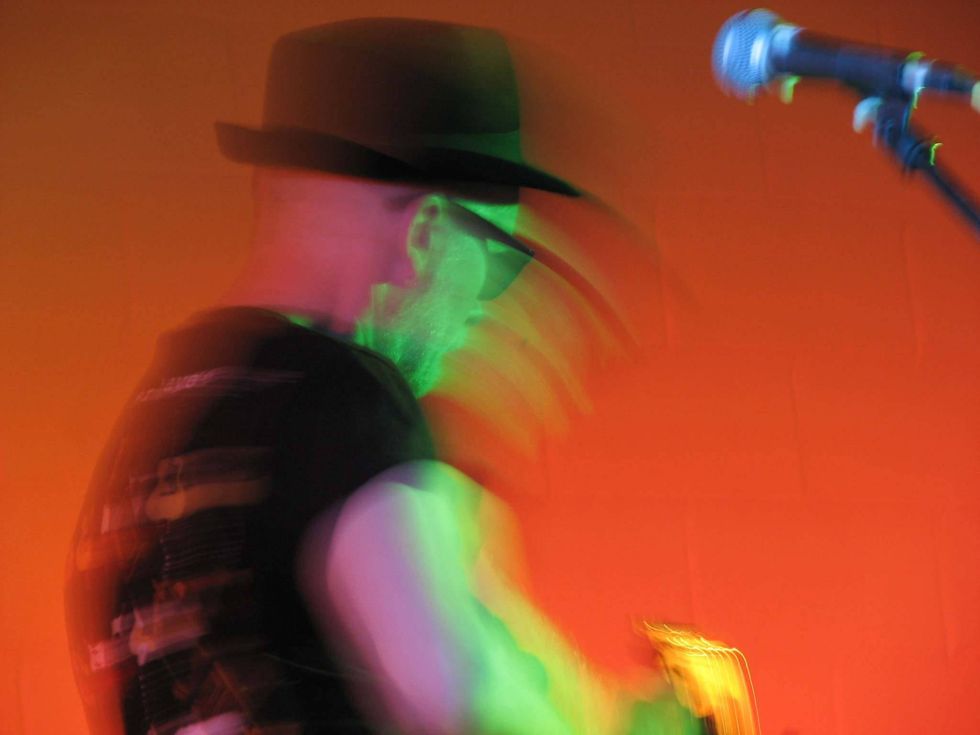Bette, my daughter, turned 3 in late December. Bette was born on the cusp of a paradigm shift, making her world almost unrecognizably different from my birth world. Bette will probably never drive a car, read a map, or have to memorize anything, thanks to a very helpful, yet strangely creepy, Siri. By the time Bette is an adult, artificial intelligence will have filled 45 percent of the jobs, as robot surgeons, teachers, cops, pilots, pharmacists, bartenders, lawyers, drivers, card dealers, journalists, etc., take over. It's hard to prepare for what's never been.
No worries. If the original Star Trek taught me anything, it's that unpredictable, illogical, human creativity always beats logic and super intelligence. So, in preparing Bette for her Black Mirror future, my guess is the best bet is to nurture her creativity.
Here's the rub: Creativity is not a skill one can learn—it's a state of mind. Regrettably, there are no directions to that state. However, researchers are digging deep to find shortcuts to get us close. Searching for answers, I read Stealing Fire: How Silicon Valley, the Navy SEALs, and Maverick Scientists Are Revolutionizing the Way We Live and Work, a book by Steven Kotler and Jamie Wheal.
Stealing Fire suggests the magic ingredient is to bypass our conscious mind.
“Conscious processing can only handle about 12,033 bits of information at once. This isn't much. Listening to another person speak can take almost 60 bits. If two people are talking, that's it. We've maxed out our bandwidth…The conscious mind is a potent tool, but it's slow, and can manage only a small amount of information at once. The subconscious, meanwhile, is far more efficient. It can process more data in much shorter time frames.In ecstasis, the conscious mind takes a break, and the subconscious takes over."
We get to ecstasis by bypassing our prefrontal cortex. The prefrontal cortex helps focus our attention, predict the outcomes of our actions, control our impulses and emotions, plan for the future, delay gratification, reason through complex logic, and more. However, the prefrontal is also a nagging inner critic—the sources of depression, anxiety, anger, jealousy, and a good deal of our no-fun neurosis. To make matters worse, there's no off switch for this Debbie Downer part of our brain. Luckily, you can occasionally get it to take a nap.
Musicians, athletes, video gamers, computer programmers, and people who've had great sex have experienced it. Call it in the zone, flow state, hypofrontality, or ecstasis—there is a magic when you're in the deep now of a task, when your inner dialogue full of doubt and second guessing is silent. It's not only when we perform our best, but feel our best. Stealing Fire breaks it down like this:
“Energy normally used for temporal processing gets reallocated for focus and attention. We take in more data per second, and process it more quickly. When we're processing more information faster, the moment seems to last longer—which explains why the “now" often elongates in altered states."
For musicians, there's some serious feel-goodery in the flow state, and not just because you're playing music better than usual. Your body also receives a rewarding hit of serotonin, dopamine, norepinephrine, endorphins, anandamide, and oxytocin. These chemicals feel great, but they also play roles in social bonding, making you look over at your drummer who's been annoying you for weeks and think, “Gosh, I just love my drummer so much."
When a band gets in this zone together, you start moving as a unit, sharing the same brain. You know that magic when a band hits a perfect, unrehearsed triplet together, then turns around smiling in wonder at each other? That's the flow-state magic. That's the reason the U.S. military has spent a fortune researching how to get their top soldiers in a flow state. When Navy SEALS silently storm a compound to take out a threat, they can't use radios to communicate. They need the mind-melding flow-state magic to move as one efficient, fast, silent unit.
The flow state hooked me when I was young, and I've been chasing the dragon from gig to gig ever since. Sometimes it works; most times it doesn't. I doubt we'll ever be able to turn it on like a faucet, but maybe with mindfulness, meditation, and whatever methods future yogis and brainiacs develop, the flow state will become more easily accessible for those willing to do the work to get there.
Bette, probably like all kids, is a natural artist. I watch her totally absorbed with a box of crayons and envy her. I hope she maintains her inner artist and develops all the essential benefits of her prefrontal cortex without any of the nagging neurosis to undermine her creative spark. Creativity is the currency of the future, and right now that girl is rich.














![Rig Rundown: Russian Circles’ Mike Sullivan [2025]](https://www.premierguitar.com/media-library/youtube.jpg?id=62303631&width=1245&height=700&quality=70&coordinates=0%2C0%2C0%2C0)




